Main menu
Common skin conditions

NEWS
Join DermNet PRO
Read more
Quick links
Athlete's foot — extra information
Athlete's foot
Author: Hon A/Prof Amanda Oakley, Dermatologist, Hamilton, New Zealand, 2003.
Introduction Causes Clinical features Diagnosis Differential diagnoses Treatment
What is athlete's foot?
Athlete's foot is a term often used to describe a fungal infection (or dermatophytosis) of the foot (tinea pedis).
It most often results in peeling skin and fissuring between the toes (the toe clefts). The cleft between the fourth and fifth toes is the most frequently affected.
Fungal infection is not the only reason for peeling and fissuring between the toes, and the term athlete's foot is sometimes used to refer to any condition where the toe clefts are inflamed.
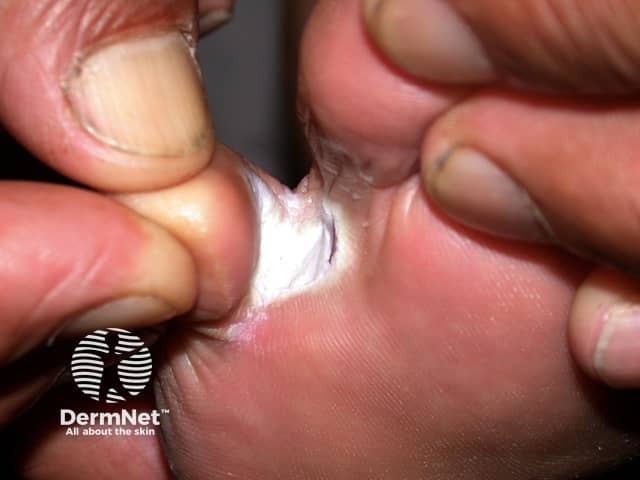
Athlete foot
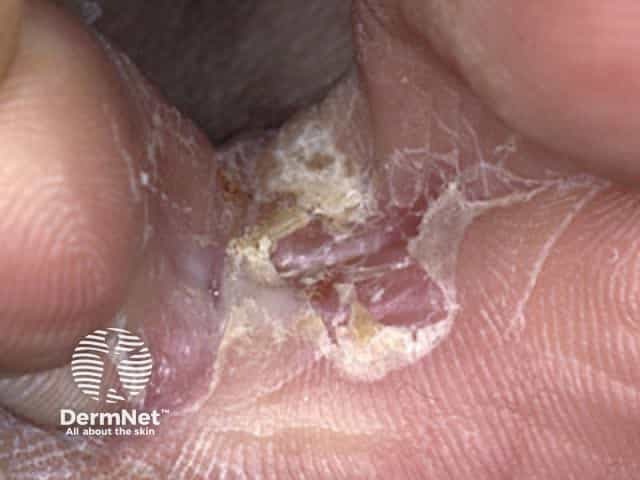
Athlete foot
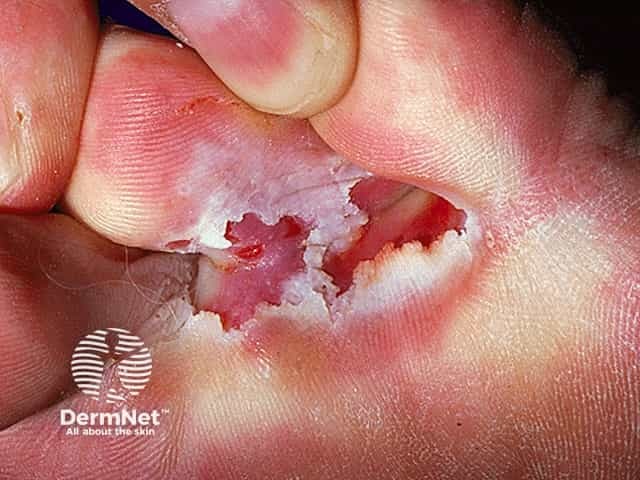
Athlete foot
What causes athlete's foot?
Athlete's foot is generally due to proliferation of dermatophyte fungi of the genera Trichophyton rubrum, Trichophyton interdigitale, and Epidermophyton floccosum.
Predisposing factors
Athlete's foot is more common in those who participate in sports because:
- They may wear occlusive footwear
- They sweat heavily
- They may fail to dry their feet carefully after showering
- They are exposed to fungal spores on the surfaces of communal areas.
What are the clinical features of athlete's foot?
The clinical features of athlete's foot may include:
- Moist, peeling skin between the toes
- White, yellow, or greenish discolouration
- Sometimes, thickened skin
- Painful fissures
- Unpleasant smell.
Athlet's foot is generally mild; very inflamed athlete's foot is generally due to secondary bacterial infection.
How is athlete's foot diagnosed?
The diagnosis is usually clinical, as athlete's foot has a characteristic appearance. If resistant to treatment, investigations are undertaken to identify a specific infection.
- Scrapings for fungal microscopy and culture
- Swabs for bacterial microscopy and culture
- Wood's light (ultraviolet) examination looking for coral-red fluorescence, characteristic of erythrasma
What is the differential diagnosis of athlete's foot?
Athlete's foot is a localised interdigital form of intertrigo.
Apart from tinea pedis, peeling and fissuring between the toes can be due to:
- Yeast infection (candida)
- Bacterial infection (erythrasma, pseudomonas, staphylococci and streptococci)
- Mould infection
- Soft corn (build-up of thick skin due the repetitive trauma of the toes pressing against each other)
- Injury, for example over-vigorous removal of peeling skin
- A skin condition, such as psoriasis (scaly patches in scalp, on elbows and knees or rashes in body folds), foot eczema or keratolysis exfoliativa.
Non-fungal causes of athlete's foot
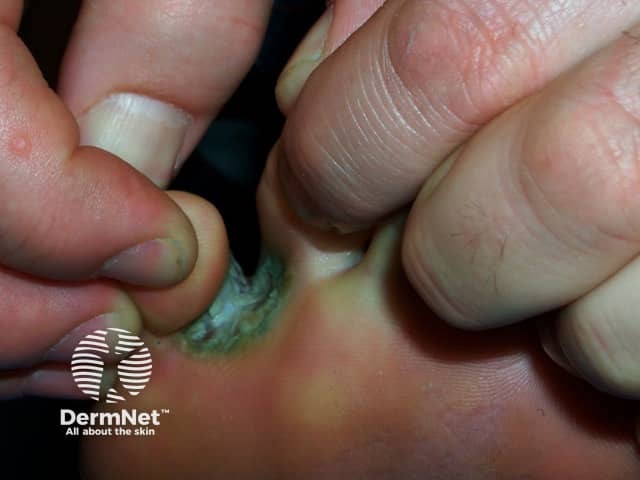
Pseudomonas infection

Psoriasis
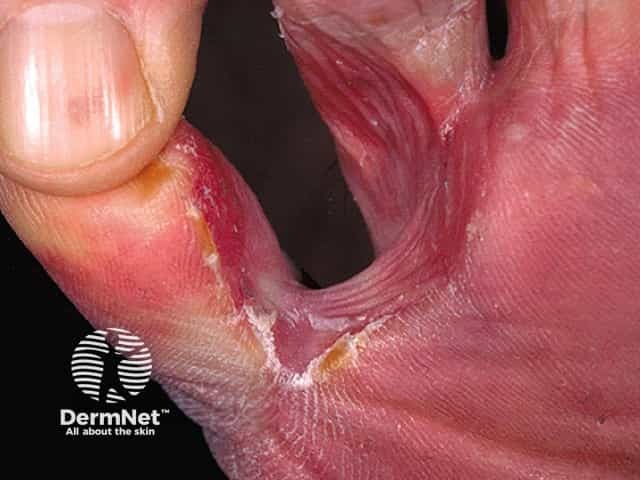
Eczema
What is the treatment of athlete's foot?
Treatment for athlete's foot should begin with general measures.
- Dry carefully between the toes.
- Use a dusting powder to keep the affected area dry.
- Keep toes apart using a cotton or foam wedge.
- Wear shoes that are loose around the toes or go bare foot.
- Apply a topical antifungal agent. These may also control many of the bacteria that live in the moist skin between the toes.
Whitfield ointment (3% salicylic acid, 6% benzoic acid in petrolatum) is particularly useful, as it removes the surface layer of moist peeling skin (ie, it is keratolytic), and it eliminates bacteria and fungi.
Make sure that other sites of fungal infection are also treated effectively.
On DermNet
- Tinea
- Tinea pedis
- Tinea pedis images
- Introduction to fungal infections
- Laboratory tests for fungal infections
- Treatment of fungal infections
- More images of tinea pedis
Other websites
- Athlete's Foot– Medline Plus
- Tinea pedis – Medscape Reference
- Patient information: Ringworm, athlete’s foot, and jock itch (The Basics) – UpToDate (for subscribers)
- Patient information: Ringworm (including athlete's foot and jock itch) (Beyond the Basics) – UpToDate (for subscribers)
